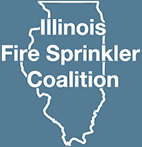WHAT IS NFPA 13D?
 A residential sprinkler system for a one- and two-family home falls under the NFPA 13D system. Essentially it utilizes the same ideals as a standard NFPA 13 system but has special design variations to help mitigate the cost of the system. Here are some of the differences between a NFPA 13 and NFPA 13D system:
A residential sprinkler system for a one- and two-family home falls under the NFPA 13D system. Essentially it utilizes the same ideals as a standard NFPA 13 system but has special design variations to help mitigate the cost of the system. Here are some of the differences between a NFPA 13 and NFPA 13D system:
- Appearance
- Water Supply
- Piping material and size
- Sprinkler Head locations
- System Design
- Cost
One of the first differences that you will notice between a NFPA 13 and NFPA 13D system is the appearance of the sprinkler heads. The standards sprinkler head utilized in an NFPA 13 system is the common pendent or upright sprinkler head. You probably have seen them discreetly hanging from the ceiling at your office building. The most common sprinkler head now used in a residential sprinkler system is a fully concealed pendent sprinkler head. This sprinkler head rests flush against the ceiling and virtually is unnoticeable to the homeowner.
A standard NFPA 13 system requires a constant reliable water source to adequately serve the system. This can be a large amount of water at times, but the majority of NFPA 13 systems simply utilize city water supplies to serve the system. An NFPA 13D system requires only a small fraction of the water supply compared to an NFPA 13 system. Again, the majority of NFPA 13D systems simply utilize the domestic water supply of the home. However, in some cases such as in a rural application a stored water supply and small pump may be needed to supply the system. When a stored water supply is the only source of supply, the minimum quantity of stored water is the system demand rate times 10 minutes. An average home would only need approximately a 300 gallon storage tank to supply the system. It is important to note that an NFPA 13D system does not need to use a listed fire pump, storage tank, waterflow detection device, hangers, or waterflow valves. This helps reduce the cost of the overall system where such devices are needed.
In a standard NFPA 13 system black steel pipe is the standard piping used. These systems utilize piping ranging in diameters from 1” up to 8” for large systems. An NFPA 13D system usually uses copper or a fire rated plastic pipe (CPVC). This piping is easily concealed in walls and ceilings so it is not visible to the homeowner. This listed sprinkler piping is easier to work with, requires fewer tools, and is more economical than standard black steel pipe. The standard size of pipe used in an NFPA 13D system is much smaller than an NFPA 13 system as well. The majority of NFPA 13D systems only use piping ranging in diameters from 1” to 1-1/2”.
In an NFPA 13 system, sprinkler heads are required to be installed throughout the entire building and in all rooms. An NFPA 13D system has special design characteristics that eliminates some areas from having to be protected. The following are areas in which an NFPA 13D system doesn’t have to have a sprinkler head:
- Bathrooms that are 55 sq. ft. or less
- Clothes closets, linen closets, and pantries that do not exceed 24 sq. ft. where the lease dimension does not exceed 3 ft. and walls and ceilings are surfaced with non-combustible material
- Garages, open attached porches, carports and similar structures
- Attics, crawlspaces, other concealed spaces
These exemptions help reduce the number of sprinkler heads and piping thus helping to reduced the total cost of the sprinkler system.
A standard NFPA 13 sprinkler system is hydraulically calculated to demonstrate that the water supply is sufficient to serve the system demand. These calculations can be technically complex and use approximately 5 to 12 sprinkler heads during the calculation process. An NFPA 13D calculation process is less complex and more “user friendly”. Only a maximum of two sprinklers heads are used in the calculation process. This dramatically reduces the total amount of water supply and piping size that is needed to adequately meet the system demand. It is important to note that statistics have shown that over 90% of residential fires only required one sprinkler head to activate in order to contain and in most cases extinguish the fire.
With these special design advantages NFPA 13D systems become very affordable when comparing to the total cost of the home. On average a residential sprinkler system in a new home costs approximately 1% to 1-1/2% of the total value of the home.

